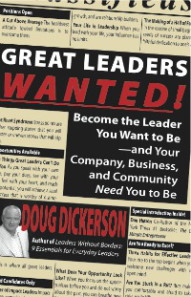
I don’t care what they’re going to say. Let the storm rage on, the cold never bothered me anyway. – Lyrics from Disney’s’ movie, Frozen.
Call me slow, but 229 million people beat me to the YouTube viewing of Let it Go, the enormously popular song from the Disney movie, Frozen. For the record, I haven’t seen the movie, but I have paid attention to the media buzz that the song has generated. It’s huge.
While people from many sectors have embraced the song for a wide range of reasons, the underlying tone resonates. There comes a time when you just to have to do what the song says and let it go. But let’s now make the leap and see how this philosophy plays out in the adult world and what the implications are in your place of work.
Last year, Forbes columnist Mike Myatt wrote about the “10 Reasons Why Your Top Talent Will Leave You”. He explains that for all the talk about leadership many companies do not have a process for retaining and developing talent. Myatt says, “As with most things in the corporate world, there is too much process built upon theory and not nearly enough practice built on experience.” His observation is both astute and troubling.
His research regarding organizational culture was also very revealing. His survey of employees made for some interesting revelations: 30 percent believe they’ll be working someplace else inside of 12 months, more than 40 percent don’t respect the person they report to, more than 50 percent say they have different values than their employer, and more than 60 percent don’t feel their career goals are aligned with the plans their employers have for them. “So for all those employees who have everything under control, you better start re-evaluating,” says Myatt.
If these revelations and those similar to it are going to be corrected then there must be shifts made in leadership styles and implementation. The shifts will vary in need and scope as each company’s needs prescribe. But here are a few general ideas.
Create a shared vision.
If you want your people to have skin in the game then give them a reason for the buy-in. When your people are involved in creating the vision for their company then they will also feel they are creating a vision for their future. It’s hard to embrace what you don’t create. Roles and responsibilities of each person in the organization may vary but not their commitment if you include them. Disseminating a vision is “I” driven; creating the vision is “We” driven. Which one would you more readily embrace?
Build your culture on purpose.
The best companies build their culture on purpose. Look no further than the workplace cultures of companies like Zappos and Google to figure out why. The culture of your organization is the environment, the tone if you will, whereby your business plan can flourish and grow along with the people who work in it. It has less to do with the perks (although included) and more to do with an atmosphere that in every way, with every person, foster the opportunities to grow and prosper. Your company culture is too important to leave to chance. Build your culture on purpose and you will succeed on purpose. To do anything less is to leave money on the table of your competitors.
Open channels of communication.
Nothing frustrates employees more than the feeling, perception, or reality of communication that is lacking. What a leader perceives as communication can be received as something far different by employees. While that disconnect can be harmful it is preventable. When a leader understands that communication has less to do with the what, (although important) and more to do with the why and the big picture, it can generate goodwill. When a leader is among his or her people it lends itself to the best practice of communication which is through relationship.
It’s to time create buy-in through shared vision, build your culture on purpose to implement your vision, and open channels of communication through relationship. It’s time to let go of anything and everything that would hold you back.
What do you say?
© 2014 Doug Dickerson
I welcome your feedback:
1. What are some leadership shifts do you feel need to be made in your organization?
2. What leadership skills do you need to enhance to help create that change?
3. Which of the three ideas did you most identify with? Why?
4. What advice would you give leaders in organizations today that you believe would be most beneficial in creating a stronger company culture?
Please follow and like us:











